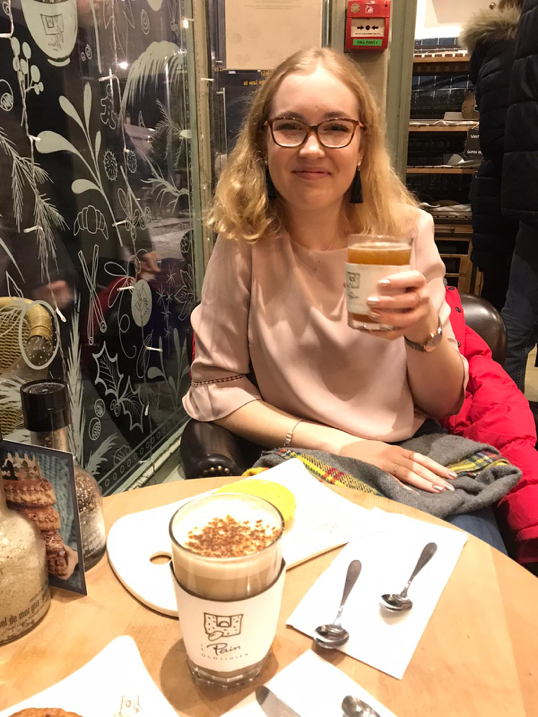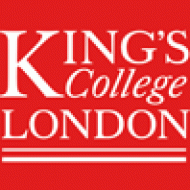This blog post is among the winners of the Department of Comparative Literatures’s 2020-2021 Blog Award for the module 6ABA0013 ‘Ethiopia and the Horn of Africa in Global Cultural Studies’. Congratulations to Paige Harris for winning the award!
Who was Afewark Gebre Iyasus?
Born in 1868, Afewark was religiously educated before his introduction to the Ethiopian political sphere. He was part of a new wave of Ethiopian intellectuals who received a European education, studying both in Switzerland and Italy, where he later taught Amharic.
In 1908, Afewark published Lebb Wallad Tarik, later re-titled as Tobbya. Literally translated as ‘a story born out of the heart’ this timeless fictionalised history of Ethiopia marked the advent of a new historical genre. As one of the first printed pieces of Amharic literature, what can Tobbya teach us?
Afewark’s novel twists and turns with disguise, misrecognition and dead-end solutions- will chance- encounters re-unite this unlucky family?
The novel centres upon the fates of a Christian family whose homeland comes under threat from ‘Pagan’ invasion: Dajazamach, his wife, and their twin children, Wahed and Tobbya.
The novel begins with the capture of Dajazamach; the pursuit of his ransom fee forces Wahed out of the familial home and into the company of a generous merchant. This merchant pays for Dajazamach’s release, and Wahed’s desire to repay his debt of gratitude sparks the first of many interwoven quests which divide the family. The themes of separation and reunion are key, as the reader’s attention is continually shifted to a new focal point.
These shifts occur through repeatedly frustrated journeys and the need to give thanks. Afewark reflects upon the diversity of human character, against the backdrop of the unforgiving Ethiopian landscape and small rural communities. Both Dajazamach and Wahed suffer cruelty at the hands of the people they meet on their journeys, including beatings, torture and slavery. However, Afewark balances this misfortune against serendipitous chance encounters.
One such encounter brings Dajazamach, Tobbya and the invading ‘Pagan’ King together. The King’s character, religious views and actions are surprising as Afewark presents him sympathetically, constructing a balanced view of this alternative religious group. After travelling with her father in male clothes Tobbya lifts her disguise, capturing the heart of the King. Tobbya’s commitment to her to her faith and pursuit of peace for her people radically changes both the invasion and the fate of her nation. Afewark uses their union to weave his moral ambition into his textual structure, he brings disparate textual strands together to unite his characters under the umbrella of Christianity. Afewark’s narrative journeys teach his characters the importance of family and virtue for both individuals and the nation.
The First Born of Amharic Literature- A Contentious Title: The Critical debate
Tobbya’s status as the first Amharic novel is a highly contested one- is it simply a primitive folktale?
Primitivism assumes literature had a linear evolution, from fables and folktales to the culmination of literary success- the realist novel. This evolution locates the novel in the West, which later filtered out to the peripheries in a diffusionist model of cultural development.
The idea of dominant Western influence and non-Western compromise is articulated by Franco Moretti’s Laws of Literature; especially his wave model, in which the novel was exported from France and Britain to locally rooted, passive recipients.
The intra-national Ethiopian debate- Simple fable vs. moral novel: Tolossa vs. Admassu Fikre Tolossa: ‘Realism and Amharic Literature’
- Fikre argues that the Amharic literary tradition followed a linear path of development which had its origins in fables and folktales, following a diffusionist mode of cultural progression.
- He states that Tobbya cannot constitute a novel as it lacks the necessary realist details, including a specific and rooted time or place. It is also missing physical and psychological elements; this means it is ‘nothing but a folktale.’ (P.62)
- Fikre surveys Amharic literature through this realist lens and works from a Communist perspective, arguing that the culmination of realist writing will serve a socialist political agenda.
Yonas Admassu: ‘The First-Born of Amharic Fiction: A Revaluation of Afework Gabraysus’ T’obbiya’
- Yonas explains that we must understand a literary tradition for what it is, rather than dictating what it should be- it does not matter whether Tobbya is realistic or not.
- He believes that a critical contextualisation of a text within its social moment is key, and in this context-sensitive framework all the elements used by Afewark belong in the cultural code he operates in.
- A critic must not be prescriptive and should attempt to understand the building blocks crafted by the author; Tobbya’s formal structure furthers Afewark’s moral goal of assimilation to unite a Christian Ethiopian Empire.
- Tobbya is a hybrid novel as its complex moral and political themes require the reader’s interpretative participation. (p. 94)
More than just a folktale- travel as a motif for moral development

An illustration of how a hero’s physical journey combines with their inner psychological developments- in Tobbya for example, Wahed encounters a lion, prompting a psychological rebirth in his quest to maturation
Travel is one literary structure that furthers Afewark’s moral and religious ambitions.
For Rebecca Jones, travel informs the reader about collective and individual experiences. In her article on ‘Translation and Transformation: Travel and Intranational Encounter in the Yoruba novel’ Jones explains how the physical journey undertaken by a traveller externalises their internal psychological development.
The intra-national encounters Tobbya, Wahed and Dajazamach have teach them about Ethiopian struggles and their places as national subjects. For Tobbya, her actualisation as a mature Ethiopian subject changes both her place within the nation, and Ethiopia itself.
Underpinning all these journeys is a strong religious ideology; piety helps the family to endure hardship. The marriage of the Ethiopian monarchy to Christian values unites a divided Ethiopian nation under the umbrella of Christianity.
So what has Afewark achieved?
Tobbya is more than a fable as the moral lessons it teaches are embedded in a complex story of familial unity. Afewark lyrically constructs an emotionally realistic and three-dimensional picture of the journey from childhood to maturation, and highlights the importance of understanding and fulfilling the role of an engaged national subject. Adopting Admassu’s framework allows us to understand this personal, religious and political story through the lens of Ethiopia’s struggle for religious unity.
Through Afewark’s carefully crafted tale of separation and re-union Tobbya has not only earnt its place as the first Amharic novel, but also reflects upon the internal journeys we all undertake.
Want to discover more?
Read: Ethiopia’s Enduring Cultural Heritage
Watch: African Renaissance: When Art Meets Power- Ethiopia
Bibliography:
Admassu, Yonas, ‘The First-born of Amharic Fiction’ in Silence is Not Golden: A Critical Anthology of Ethiopian Literature, Eds. Taddesse Adera and Ali Jimale Ahmed, (Lawrenceville (NJ): Red Sea Press, 1995), pp. 93-110
Afewark Gebre Iyasus, ‘Ləbb Wälläd Tarik’ (‘Tobbya’) [1908], Trans. Tadesse Tamrat, The Ethiopian Observer, 8.3 (1964), pp. 242-266
Jones, Rebecca, ‘Translation and Transformation: Travel and Intra-national Encounter in the Yoruba Novel’, Journal of African Cultural Studies, 27.3 (2015), pp. 98-113
 I am a third-year Liberal Arts student from London, majoring in Comparative Literature and minoring in Classics. My academic interests centre on the spread of syncretic transnational social and cultural forms, most recently including anti-colonial and black liberationist movements and the development of Ethio-Jazz and UK Grime. Whilst in sixth form I won the Mary Turner award, given to female students for their academic achievements and contributions to the wider school community. For my dissertation, I am analysing 20th c. Anglophone Caribbean authors’ use of Classical Graeco-Roman texts in order to reframe their post-colonial identities. I am particularly interested in the use of English within the colonial project as a culturally destructive tool and the feelings of rupture that this has engendered. I also teach as a part-time Swimming and Lifesaving instructor and wish to continue working with children in developmental settings in the future.
I am a third-year Liberal Arts student from London, majoring in Comparative Literature and minoring in Classics. My academic interests centre on the spread of syncretic transnational social and cultural forms, most recently including anti-colonial and black liberationist movements and the development of Ethio-Jazz and UK Grime. Whilst in sixth form I won the Mary Turner award, given to female students for their academic achievements and contributions to the wider school community. For my dissertation, I am analysing 20th c. Anglophone Caribbean authors’ use of Classical Graeco-Roman texts in order to reframe their post-colonial identities. I am particularly interested in the use of English within the colonial project as a culturally destructive tool and the feelings of rupture that this has engendered. I also teach as a part-time Swimming and Lifesaving instructor and wish to continue working with children in developmental settings in the future.
